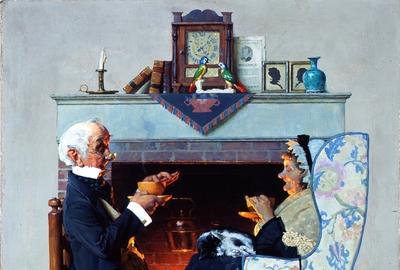Chinese Export Porcelain
- August 19, 2010 10:28
Upon entering the Hodroff Gallery at the Norton Museum, visitors are greeted by a deluge of colors sparkling from the surfaces of a multitude of porcelain objects. There are wares decorated solely in blue and white, with colors ranging from a deep violet-blue to paler hues. Elegant scrolling motifs, often depicting leaves and other floral designs, adorn these objects, as do narrative scenes, dragons and phoenixes. Deeper into the gallery, rich greens, pinks, golds, and reds accent flowers, animals, figures, and armorial designs. The shapes and sizes of these porcelains range from small teapots, dishes and vases to large punch bowls, dinner services, and the monumental “soldier vase” at the back of the room. The wide spectrum of colors, designs, and functionalities of the porcelain in this gallery provide a testament to the extent of the Chinese export trade and the variety of tastes and markets to which these objects catered.
When Vasco de Gama rounded the Cape of Good Hope in 1497, his voyage facilitated a new era of sea travel in which trade with the Far East became a well sought after enterprise for many Western countries. The Portuguese were the first to initiate trade with China in the sixteenth century. When the Dutch captured two Portuguese carracks and their cargo, which included thousands of items of porcelain similar to the blue-and-white “Kraak” dish found in the Hodroff Gallery, they auctioned off these commodities in Holland, thereby triggering a European mania for porcelain that did not wane until well into the 18th century. By the opening of the reign of the Qianlong Emperor in 1735, the China trade had expanded to include Holland, Denmark, England, France, Sweden, and Spain.
For centuries people worldwide tried to discover the secret of Chinese porcelain—that it is manufactured from two kinds of earth: a very pure white clay called kaolin, and a feldspathic stone called petuntse—with the Koreans being the first to succeed in the early 1400s. After being mined, kaolin and petuntse were prepared into rectangular bricks and delivered to potters at the porcelain-making center of Jingdezhen. Once there, vessels were shaped on the potter’s wheel, pressed or poured into molds or, less commonly, fashioned freely by hand. Unfired porcelain objects were embellished with copper (red) and cobalt (blue) then carefully coated with a feldspathic glaze which creates the characteristically smooth, lustrous surface of porcelain apparent after the vessel is fired in a kiln.
Because underglaze cobalt blue was more successful than copper red, blue-and-white wares dominated the export trade during the Ming Dynasty (1368-1644). In the late 1600s and early 1700s, other colors, in the form of overglaze enamels, were usually added after the first firing. These vessels were then re-fired at a lower temperature to fuse the enamels to the surface. Famille verte overglaze palettes include green, yellow, blue, red, and purple; see, for example, the Norton’s lobed vase with landscapes and auspicious animals. Famille rose ceramics were painted chiefly in opaque overglaze shades of pink and carmine, such as the Norton’s Masonic punch bowl with the arms of the Antient Grand Lodge of England. Other styles on view in the gallery included grisaille, a penciled decoration, and “Chinese Imari,” which featured floral designs of iron-red enamel and gilt combined with underglaze blue, an esthetic inspired by the Japanese.
Polychrome enamels allowed for the creation of more complex, detailed, and accurate decorations—a facility conducive to painting intricate armorial insignias, which became very popular with consumers who could afford to place custom orders. Though Chinese motifs, such as Mandarins, native landscapes and Taoist imagery, remained popular, Western themes rose in appeal during 1730s and ’40s. In addition to personal coats-of-arms, Western buyers often requested biblical and Greek mythological scenes. They also demanded forms alien to Chinese culture, like 300-piece dinner services, punch bowls, sauceboats and chamber pots.




















